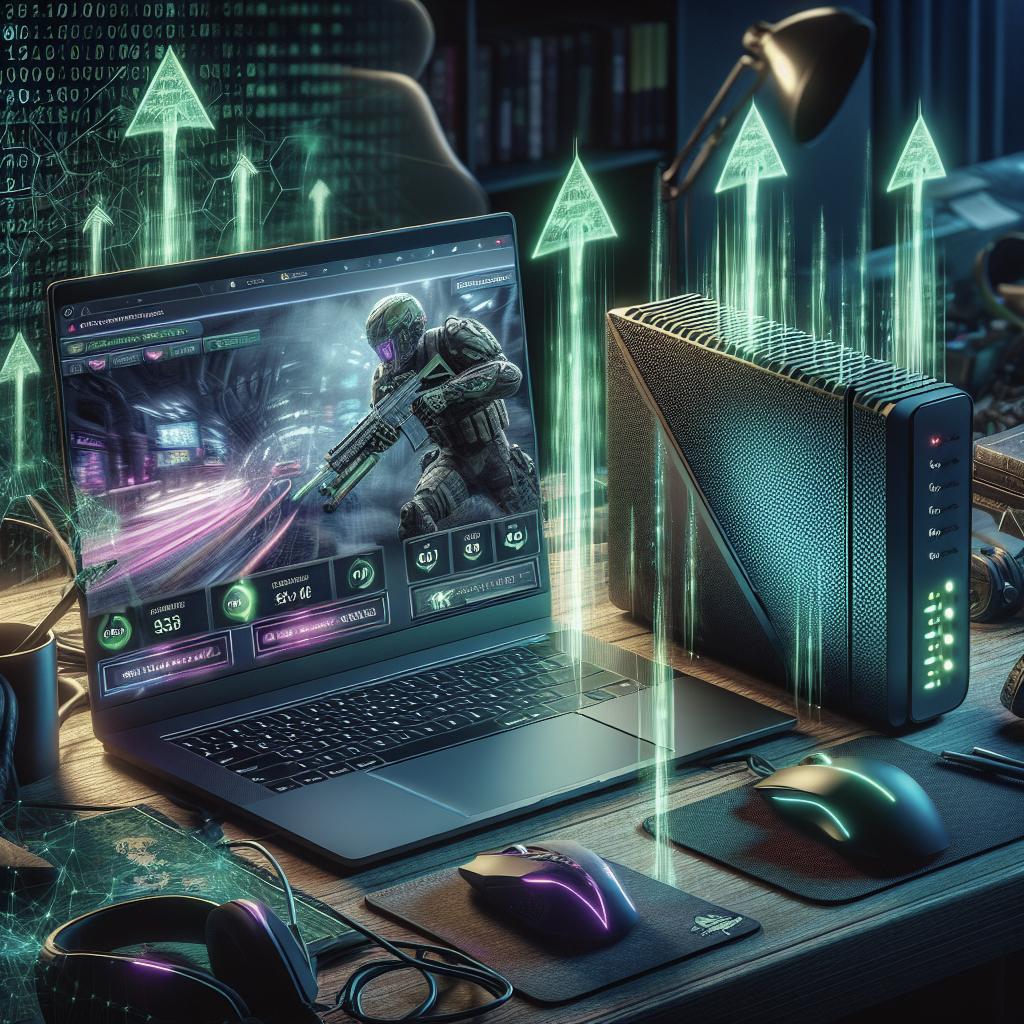<>
Getting the most out of your online gaming experience hinges largely on the quality of your internet connection. Lag spikes, slow downloads, and connectivity issues can all detract from an otherwise immersive gaming session. For gamers, optimizing the internet goes far beyond simply picking an affordable ISP plan. It involves a series of steps that ensure your connection is as fast and stable as possible. This guide will walk you through key considerations like checking your internet connection speeds, understanding and optimizing your router, managing your bandwidth, stabilizing and speeding up your connection with MoCA adapters, and fine-tuning your WiFi network. By following these steps, you can significantly improve your gaming experience and say goodbye to frustrating lag and disconnections.
1. Check your internet connection speeds
Before diving into the specifics of routers and bandwidth, the first step is to check your internet connection speeds. Knowing the download and upload speeds your ISP provides is crucial. Use reliable speed test websites like Ookla’s Speedtest.net or Google’s speed test built into their search page. These tools will give you a clear picture of your internet’s performance. Aim for download speeds of at least 15-25 Mbps for online gaming, although higher speeds can offer a better experience. Equally important is the upload speed, which affects how quickly your actions are transmitted to the game server. An upload speed of at least 3 Mbps is typically adequate. If your speeds are considerably lower than what your ISP promises, it might be time to contact them for troubleshooting or consider upgrading your plan. Keep in mind that peak usage times can affect your speed results. Running tests at different times of the day will give you a more accurate understanding of your internet performance. Also, note that other factors like the number of connected devices and current downloads in progress can skew the results.
2. Check your router
Your router plays a significant role in managing your internet connection. If you’re using an outdated model, it might be struggling to keep up with the demands of modern gaming. Routers using the 802.11ac or 802.11ax (Wi-Fi 6) standard are recommended for their enhanced speed and reliability. If you’re still using a router with the old 802.11n or earlier standards, consider an upgrade. Proper router placement is also crucial. Placing your router in a central location in your home can help ensure a consistent signal throughout. Avoid placing it in an enclosed space or near heavy electronic interference like microwaves or cordless phones. Elevating the router, such as placing it on a shelf, can also improve signal distribution. Additionally, router settings can be fine-tuned for gaming. Many modern routers come with Quality of Service (QoS) settings that allow you to prioritize gaming traffic over other types of data. By enabling QoS settings, you ensure that your gaming packets are given preferential treatment, reducing lag and improving your gaming experience.
3. Manage your bandwidth
Bandwith management is another critical aspect of optimizing your internet for gaming. With multiple devices connected to your network, it’s easy to experience congestion that can slow down your connection. Identify what’s eating up your bandwidth using the administrative tools provided by your router. Devices streaming videos, downloading large files, or running multiple applications can hog bandwidth and cause lag during your gaming sessions. One effective way to manage bandwidth is to set up device prioritization through QoS settings on your router. This can prioritize your gaming console or PC over other devices, ensuring that your game gets the bandwidth it needs even if others are watching Netflix or downloading files. You can also manually manage bandwidth by scheduling activities. For instance, download game updates or stream videos during off-peak hours. Make sure other high-bandwidth applications are not running in the background while you are gaming, as this can significantly improve the performance.
4. Stabilize and speed up your connection with MoCA adapters
For gamers who need a stable, wired connection but can’t run Ethernet cables directly, MoCA (Multimedia over Coax Alliance) adapters can be a game-changer. MoCA technology turns your existing coaxial cabling (the type used for cable TV) into a high-speed Ethernet-like network. This is particularly useful for homes with poor WiFi coverage or where WiFi signals face a lot of interference. Setting up MoCA adapters is straightforward. You’ll need at least two adapters: one connects to your router and the coaxial outlet, and the other connects to your gaming console or PC. This approach can provide speeds up to 1 Gbps with minimal latency, making it ideal for online gaming. MoCA adapters offer several advantages over traditional powerline adapters, as they are less susceptible to electrical noise and interference. This creates a more reliable and faster connection, which is essential for competitive gaming where every millisecond counts.
5. Optimize your WiFi network
If wired connections aren’t an option, optimizing your WiFi network can improve your gaming experience significantly. Start by selecting the right WiFi channel. Routers usually default to a specific channel, and if many of your neighbors are using the same one, it can lead to congestion. Use tools like WiFi Analyzer to find the least crowded channel and switch your router’s settings accordingly. WiFi extenders can also help if you are experiencing coverage issues in certain parts of your home. They amplify the signal, thus extending the coverage area. However, keep in mind that extenders may introduce some latency, so they might not be suitable for competitive gaming. Mesh networks, on the other hand, can offer a more seamless experience, as they create a unified network with multiple access points, reducing latency and improving coverage. Another feature to consider is the band. Modern routers often come with dual-band capabilities, providing both 2.4 GHz and 5 GHz options. While the 2.4 GHz band covers a larger area, the 5 GHz band offers faster speeds. For online gaming, connecting to the 5 GHz band whenever possible can provide a more stable and faster connection.
Next steps
| Step | Action | Details |
|---|---|---|
| Check your internet connection speeds | Run speed tests | Use reliable speed tests like Ookla’s Speedtest.net to measure download/upload speeds |
| Check your router | Upgrade and optimize placement | Upgrade to a router using 802.11ac or Wi-Fi 6, and place it centrally and elevated |
| Manage your bandwidth | Prioritize and schedule | Use QoS settings to prioritize gaming traffic; alter activity schedules |
| Stabilize and speed up your connection with MoCA adapters | Use MoCA technology | Install MoCA adapters to create a stable wired connection through coaxial cables |
| Optimize your WiFi network | Select channels and use extenders or mesh networks | Choose the least crowded WiFi channel and use advanced options like mesh networks |


